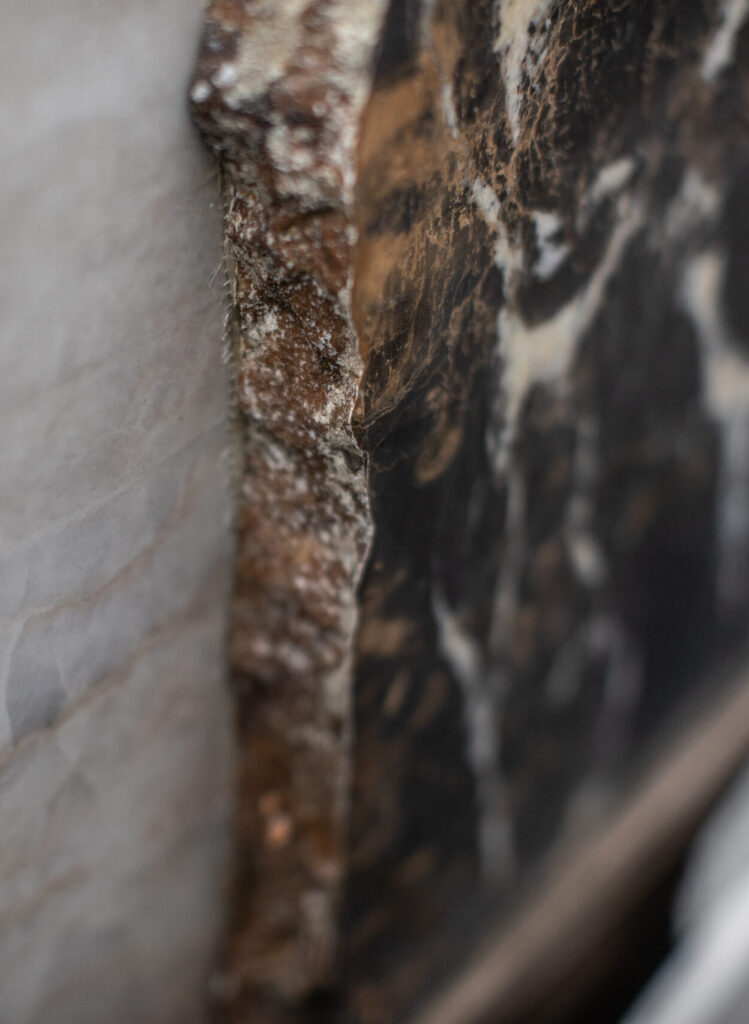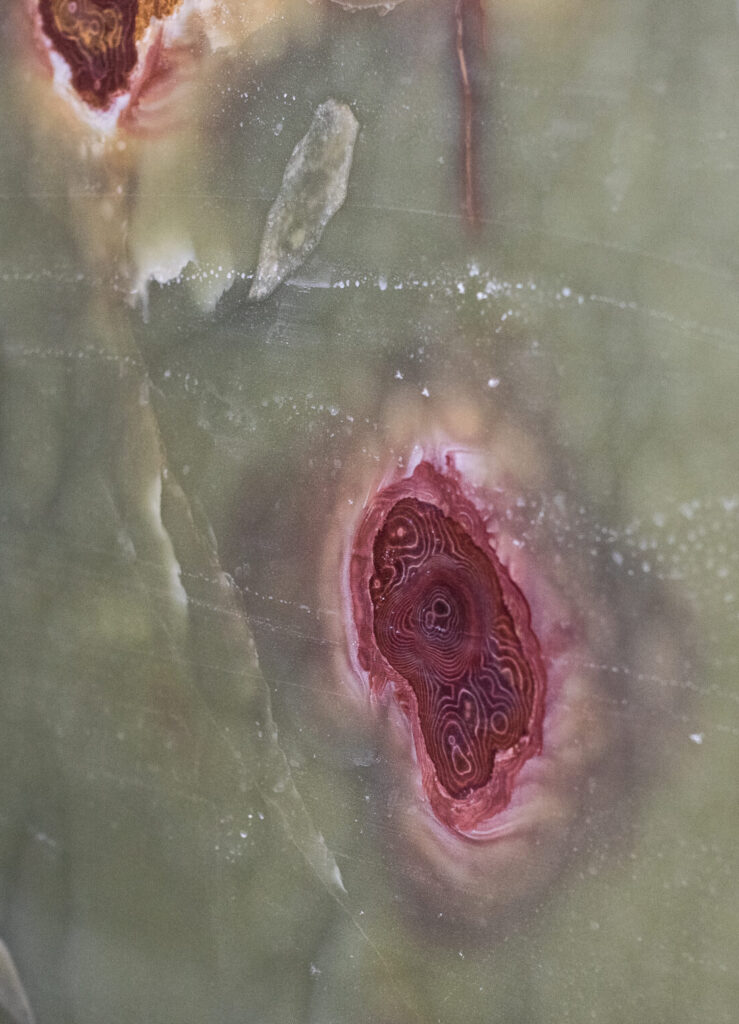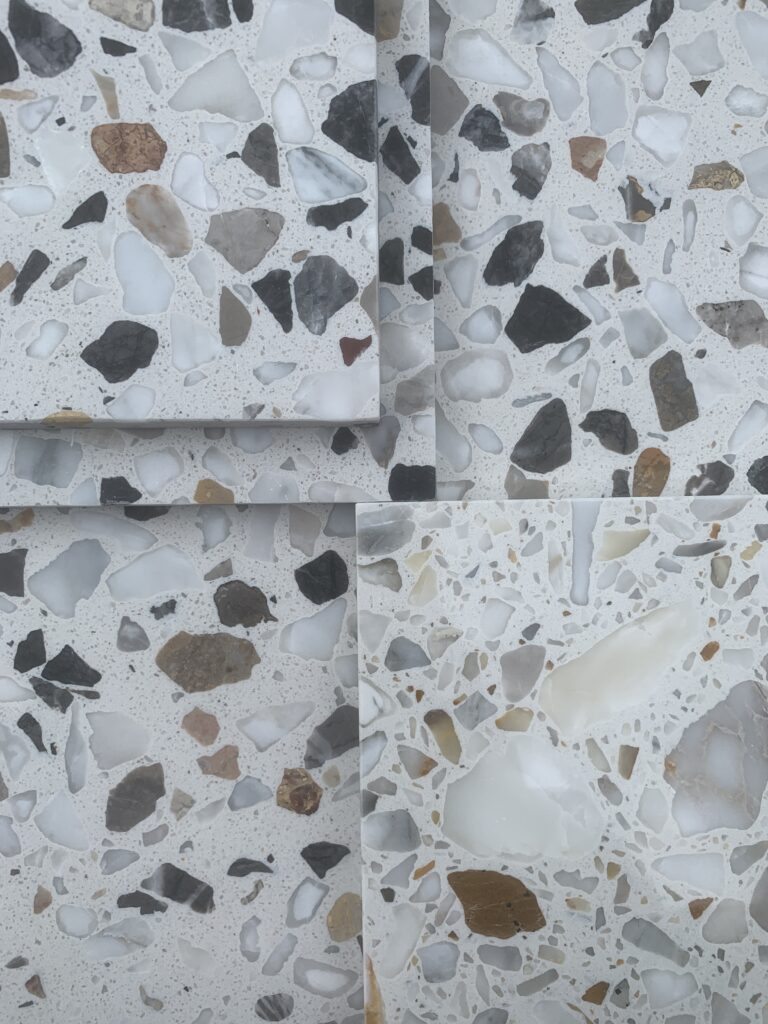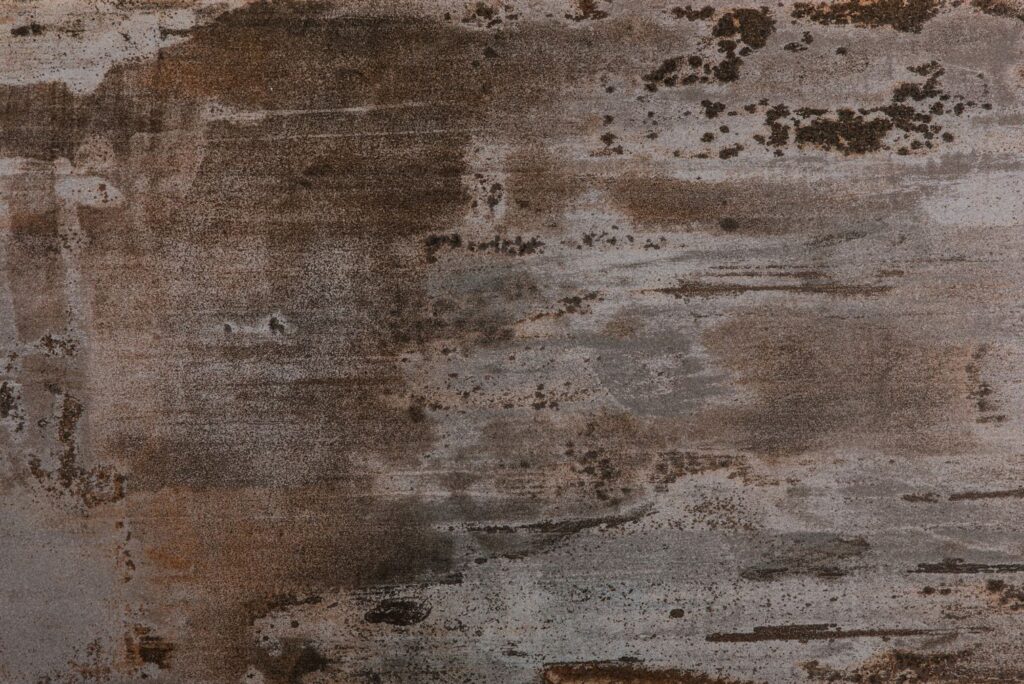Types of stones
What are the important criteria for you when choosing stone?Having a natural material? Considering sustainability? Easy maintenance? Heat and UV resistance? Discover different stone types to find yours.
Marble
Marble forms when limestone is subjected to the heat and pressure of metamorphism. Marble is a classic and timeless material that is widely used in interior design. Marble, like all precious things, requires care. Despite being a relatively soft stone prone to stains and scratches, it is durable and long-lasting if well-maintained and kept clean. Typical marble finishes are polished and honed, though more exclusive options are available on request.

Granite
Granite forms from the slow crystallization of magma below Earth’s surface and it mainly consists of natural quartz. Most granites are predominantly grey and black in colour, but in addition to ordinary coloured granites, there are exotic coloured stones available as well. Granite’s texture, strength and resilience make the stone so appealing and a popular choice for kitchen worktops and bar tops. It’s natural characteristics make it possible to apply a variety of finishes, such as polished, honed, leathered, brushed and flamed.

Quartzite
Quartzite’s natural components make it extremely hard and resistant to any type of stress and wear. Quartzite’s visual appearance offers most variety: it’s structure may consist of an endless number of tiny veins (i.e. Taj Mahal quartzite). Some quartzites look very much like marble due to warm colour palette and marble-like veins and patterns (i.e. Super White). Quartzite may have extraordinary patterns – not simply veins, but geometric formations (i.e. Illusion). It also has the largest variety of bright colours: red, blue and green in various shades (i.e. Las Vegas Rock, Jadore, Blue Roma etc). Quartzite is the right choice for those who love natural stone and want something extraordinary. Quartzite is between 1.6 and 1.7 billion years old, making it the oldest and hardest rock in the world.

Limestone
Limestone is the predecessor of marble. This is the reason why these two stone types are similar in terms of sensitivity to the environment. Limestone consists of pressed microscopic grains that in essence are remnants of fossils, sand and mud from the ocean bed. As a result, limestone generally has an earthy palette, and a stone slab often contains complete fossils, which miraculously remained untouched by nature throughout history. These fossils are one of the reasons why the stone is so uniquely attractive. Most of the time, limestone is sold with a honed finish.

Onyx
The flagship of natural stones, onyx is a very rare and expensive material that brings extraordinary colors and patterns to your interior. The beauty of onyx comes at the price of being extremely fragile. Onyx tends to chip and crack during processing, so it takes special knowledge and skills to fabricate this material. The appearance of this stone can be described as exotic and cloudy. Onyx has bright and contrasting impurities. It is common for interior architects to design a backlight for the stone in order to put an accent on its natural beauty. Backlit stone’s surface becomes translucent, bringing out more pattern and character.

Travertine
Travertine is a type of limestone that was formed by mineral deposits at a mouth of a hot spring or in a limestone cave. Travertine has an earthy palette and the distinctive characteristic of large pores scattered all over the stone. These pores can be filled with resin or left in their original form depending on the project’s visual and technical requirements. Raw travertine with sponge-like pores is completely unique in appearance. Travertine has been used for construction since ancient times. Today it is often used for free standing furniture and amazing wall panels. Architects are especially keen to use travertine for the warm atmosphere and limitless variation of patterns that are possible to create with it.

Terrazzo
Terrazzo is a composite material made of marble chippings set into cement. Terrazzo originated in 16th-century Italy as a way to reuse stone offcuts. Lately some producers have switched from traditional cement to resin filling. This is a more expensive option, but offers a smoother finish and more resistance to scratches and cracking. With Terrazzo it is possible to create limitless designs according to trends and custom colour combinations for larger orders. Terrazzo is among the most affordable stone types on the list, which makes it a tempting material choice for furnishing public spaces.

Engineered stone/ Quartz stone
Engineered stones are produced by various brands. They follow the design trends, introducing collections with new colours and patterns each year. Engineered stone is more light-weight, strong, and easier to fabricate than natural stone. It does not scratch or stain like marble and does not require impregnation. Engineered stone is made from ca 95% ground quartz and ca 5% resins and pigments that define the visual characteristics of the surface. Quartz worktops are not suitable for outdoor use, because they are not completely UV-resistant and their colour may fade when exposed to direct sunlight. Also, it is recommended to use a table mat on your quartz kitchen countertop when you place items from stove to worktop. Quartz stones may be affected by thermal shock when a hot pan is placed directly on the stone surface.

Sintered stone and Ceramics
Ceramic surfaces such as Dekton® by Cosentino are man-made products comprising a very sophisticated blend of raw materials. Ceramic surfaces do not contain resins like engineered stone. That gives ceramics superior properties like resistance to UV-light, heat and chemicals. It is not uncommon to confuse ceramic and quartz, although their manufacturing technology, visual and technical characteristics differ in many ways. UV resistance allows ceramic surfaces to be installed anywhere, including on outdoor facades. Furthermore, ceramic is the most scratch and stain resistant stone available. As with other man-made types of stone, there are various colours and finishes available which are regularly updated and developed. Marmi Futerno mainly uses Dekton® and Laminam, although products from other brands are available upon request.
